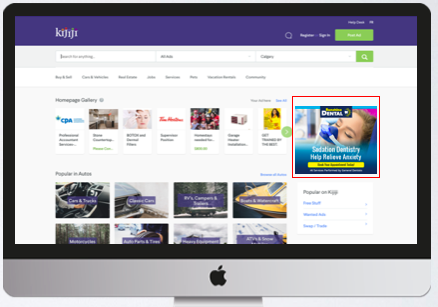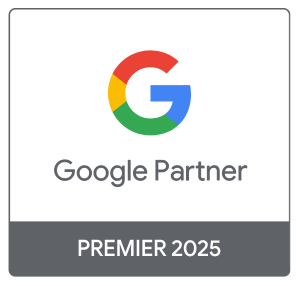Marketing your dental practice in the old days seemed so much simpler, didn’t it? You met with your Yellow Pages rep once a year to decide what type of ad you were going to run, how it would look, what it would advertise, etc. Then you’d hold your breath and prepare to spend $24,000 a year or more on your marketing.
Ah, the good old days. But wait! Sometimes we forget about all the problems we encountered back then. Like when you spent your $24,000 a year on a half-page ad, only to find that the practice across the street bought a full-page ad. Or trying to compare the effectiveness of your print ad against radio ads, TV ads, and mail-out advertising; except the only ways to measure success were through distribution and broadcasting numbers.
2019 is an amazing time for business owners who are trying to get the most out of their marketing. Right now, pretty much every channel of digital marketing is trackable, to show you exactly how well each medium works for you. It’s easier than ever to make sure you’re spending your marketing dollars in the right place. But how do you even know where to start?
I’ve got 12 tried and true marketing ideas you should try in 2019 for your dental practice.
Editor’s note: Remember that the rules and bylaws for marketing your dental practice vary by province, territory, and state. These ideas are effective, but may not adhere to the regulations for dentists in your area. Please be sure to check the standards set by the regulatory body in your region before investing in a marketing strategy.
1. A Solid Website

Too many business owners see their website like a listing in a phone book; something to help patients find you, but not necessarily a marketing tool.
The truth is that your website should be the focal point of any type of marketing. It’s your practice’s 24-hour salesperson, and it needs to represent the quality of the services you provide.
When potential patients come to your website, they should be able to navigate across your site easily. Your user should be able to find the information they’re looking for in 3 clicks or less. Programs like LuckyOrange offer heatmap tracking, which shows where your audience is clicking and what pages your users spend the most time on.
2. Search Engine Optimization

If no one can find your website, you might as well buy a billboard on an uninhabited island. SEO, or search engine optimization boosts the value of your site by making it easier to find on Google. This breaks down into two main parts: onsite and offsite factors. The goal is to answer questions potential patients in your area may be asking, for example: “How often should I get my teeth cleaned?”
Onsite
Onsite SEO refers to the back end coding of the site, as well as the content written on the site.
- Meta descriptions, for example, are 240-character sentences used to help Google understand exactly what a page about. Every page should have its own description that relates back to your business, the geographical area, and the services you offer.
- Every service you offer should have a dedicated page on your website. So for example, if you have a service page written about Invisalign that also talks about your teeth whitening services, Google is not going to see the correlation and will consider you more like a “jack of all trades” than an authority on either subject.
Offsite
Offsite SEO refers to the links that other websites use to send traffic to your site. Google sees these links and, if they’re of good quality, values them. If the links are coming from a website designed to list links, or a “link farming” site, they will give your site less credibility than links from reputable sources would.
3. Search Engine Marketing

Search engine marketing or SEM is a generic term that refers to marketing on any and all search engines, but most companies relate it specifically to GoogleAds (previously called Adwords).
GoogleAds should be a pillar in your marketing strategy. Focusing your practice’s GoogleAds around specific relevant keywords allows your practice to show up no matter what people are searching, as long as it relates to your practice.
A good SEM campaign manager will ensure your practice shows up for the right searches while making sure your budget is optimized to bring in the right types of patients. Google’s algorithm dictates ads based on the budget a business is willing to pay-per-click multiplied by the ad’s quality score. Quality Score is dictated by a ratio: How often your ad shows up in a search results page Vs. How many times its clicked. Its also dictated by how long a person stays on the page, and where they go on your site from there.
4. Facebook Community Management

This term refers to the way a business posts and engages with Facebook users who have liked their business page. Generally, less than 3% of the people who like your page are going to see the posts you make. That’s why your facebook says you have 255 followers, but only 7 of them ever seem to see your posts.
If you want more people to see your posts, you need to put money behind it. Community management is great for engaging people who really care about your business but it doesn’t always help build up your patient base.
5. Facebook Ads

Just like GoogleAds Facebook ads are Pay-per-click. That said, the beautiful thing about Facebook advertising is that you can target the exact patients that you’re looking for based on their age, area, education, cultural affinity, gender, whether they are parents, etc.
Facebook offers an awesome tool called Audience Insight to track user behaviours, interests, and locations.
6. Instagram

Instagram is a great place to market your practice and get your brand out there for young adults and new families. Instagram is owned by Facebook, so you can actually just take the ads you built in number 5 and focus them on Instagram as well! Cool, right?
A quick note for number 4, 5, and 6; while social marketing is the least expensive way to get eyes on your business, it’s generally not a lead generator. Social media platforms are usually more of a branding play.
7. Display Advertising

Display ads are those images that turn up at the side or top of a web page. Like this:

These ads allow your practice to brand itself across the most commonly visited websites in your area. Display ads are usually pay-per-impression, and they’re a very inexpensive way of branding your business.
8. Hyper-Local Mobile

Thanks to hyper-local mobile advertising, you can market to people on mobile devices near your location. You could target someone on their phone as they eat lunch across the street from your practice.
Essentially, even if the user does not live close to your practice, your location may still be convenient for them based on where they work, pick their kids up from daycare, or even do their shopping. This type of targeting makes sure people in your area know you’re there, whether they live nearby or not.
9. Video

It’s 2019. There’s limitless information available at our fingertips, and we want to consume as much as possible as fast as possible. People are more likely to notice video advertising because it’s easier to consume and it engages 2 of your senses.
Video is an awesome and cost-effective way to advertise. On YouTube for example, you only pay for your ad to run when someone watches the full video (or the first 10 seconds; whichever comes first).
10. Print Media

Hasn’t print media gone the way of the dinosaur? Well, depending on the location of your practice, print media might still be an effective way to advertise your dental clinic.
Having said that, I would caution you to take a look at the analytics of your digital marketing strategy to see where the majority of your patients are coming from. Then you can focus your efforts towards those sections of the city.
Also, I’d recommend against signing any long-term contracts. And don’t forget to place a call tracking phone number on any print ads. This is the best (and really the only) way to track how many leads your print campaign generates.
11. Radio

For decades, media geniuses have been predicting the demise of radio. But it’s managed to stick around through everything so far, which means it’s probably not going anywhere in the near future. Many practices across North America find radio to be beneficial because it allows you to brand your business to many different types of people. Having said that, it is definitely an expensive option, and generally speaking, the broadcast range reaches farther than any patient would be willing to travel.
If you like radio advertising, you may want to consider Spotify ads. You still get audio advertising, but with more accurate targeting.
12. Television

Much like radio, TV ads have their uses, but advertising a local business may not be one of them. TV reaches a very large area of marketing and is expensive if you want to get a good airtime.
Also, (and this is just my opinion) think about what you do when an ad comes on TV. Most viewers will either:
- Channel surf
- Fast forward through the ads (assuming they aren’t watching live)
- Look at their phone and get sucked into one digital platform or another.
The Big Takeaway
The biggest “tried and true” recommendation I can give you is this: try it yourself and see if it’s true.
Marketing varies a lot. It can be drastically different from a large market to a small market. And of course, if you don’t know or understand what sort of return your marketing is giving you, you might be throwing money out the window.
Track everything, and don’t sign long-term contracts unless you’re certain it will work. In our digital age, there is no reason to sign a long-term contract, as the majority of marketing is done at the flip of a switch. The agency you work with should be able to put its money where its mouth is, show you measurable results, and work with you to build your practice.






